
Bank robbery is the criminal act of stealing from a bank, specifically while bank employees and customers are subjected to force, violence, or a threat of violence. This refers to robbery of a bank branch or teller, as opposed to other bank-owned property, such as a train, armored car, or (historically) stagecoach. It is a federal crime in the United States.

The Getaway is a 1972 American action thriller film based on the 1958 novel by Jim Thompson. The film was directed by Sam Peckinpah, written by Walter Hill, and stars Steve McQueen, Ali MacGraw, Ben Johnson, Al Lettieri and Sally Struthers. The plot follows imprisoned mastermind robber Carter "Doc" McCoy, whose wife Carol conspires for his release on the condition they rob a bank in Texas. A double-cross follows the crime, and the McCoys are forced to flee for Mexico with the police and criminals in hot pursuit.

The Great Train Robbery is a best-selling 1975 historical novel written by Michael Crichton, his third novel under his own name and his thirteenth novel overall. Originally published in the US by Alfred A. Knopf, it was later published by Avon, an imprint of HarperCollins Publishers. The novel tells the story of the Great Gold Robbery of 1855, a massive gold heist that takes place on a train travelling through Victorian-era England on 22 May 1855. Most of the book takes place in London. A 1978 film adaptation was written and directed by Crichton.

Armored Car Robbery is a 1950 American film noir starring Charles McGraw, Adele Jergens, and William Talman.

Crime Wave is a 1954 American film noir starring Sterling Hayden and Gene Nelson, and directed by Andre de Toth. It was adapted from a short story which originally appeared in The Saturday Evening Post - "Criminal Mark" by John and Ward Hawkins.

The Thomas Crown Affair is a 1968 American heist film directed by Norman Jewison and written by Alan Trustman. It stars Steve McQueen, Faye Dunaway, Paul Burke and Jack Weston. In the film, Vicki Anderson (Dunaway) is hired to investigate the culprits of a multi-million dollar bank heist, orchestrated by Thomas Crown (McQueen).

Robbery is a 1967 British crime film directed by Peter Yates and starring Stanley Baker, Joanna Pettet and James Booth. The story is a heavily fictionalised version of the 1963 Great Train Robbery. The film was produced by Stanley Baker and Michael Deeley, for Baker's company Oakhurst Productions.
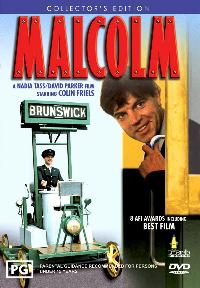
Malcolm is a 1986 Australian cult film comedy, made by the husband-and-wife team of [[David Parker and Nadia Tass. Parker wrote and shot the movie which was directed by Nadia Tass. The film stars Colin Friels as Malcolm, a tram enthusiast who becomes involved with a pair of would-be bank robbers. His co-stars are Lindy Davies and John Hargreaves. The film won the 1986 Australian Film Institute Award for Best Film, and seven other AFI awards including Best Original Screenplay and Best Director.

The First Great Train Robbery is a 1978 British heist comedy film directed by Michael Crichton, who also wrote the screenplay based on his 1975 novel The Great Train Robbery. The film stars Sean Connery, Donald Sutherland and Lesley-Anne Down.

The 2006 Securitas depot robbery in Tonbridge, England, was the UK's largest cash heist. It began with a kidnapping on the evening of 21 February 2006 and ended in the early hours of 22 February, when seven criminals stole almost £53 million. The gang left behind another £154 million because they did not have the means to transport it.
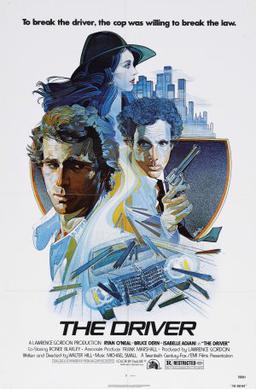
The Driver is a 1978 American crime thriller film written and directed by Walter Hill, and starring Ryan O'Neal, Bruce Dern and Isabelle Adjani. The film featured only unnamed characters, and follows a getaway driver for robberies whose exceptional talent has prevented him being caught. A detective promises pardons to a gang if they help catch him in a set-up robbery.
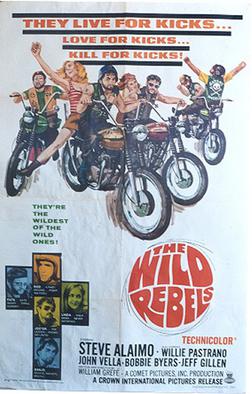
Wild Rebels is a 1967 film directed by William Grefe and starring Steve Alaimo as Rod Tillman, a stock car driver who goes undercover as the wheelman for a motorcycle gang. The tagline for the film was "They live for kicks... love for kicks... kill for kicks".
Egan's Rats was an American organized crime gang that exercised considerable power in St. Louis, Missouri, from 1890 to 1924. Its 35 years of criminal activity included bootlegging, labor slugging, voter intimidation, armed robbery, and murder. Although predominantly Irish-American, Egan's Rats did include a few Italian-Americans and some Jewish immigrants, most notably Max "Big Maxie" Greenberg.
The Linwood bank robbery was a bank robbery that occurred in Linwood, near Glasgow, in 1969. Three police officers were shot in the aftermath and two officers were later awarded George Medals. The lead robber, Howard Wilson, served 32 years in prison for the robbery, the murder of two officers and the attempted murder of a third; he was paroled in 2002.
Lawrence DeVol was an American criminal, bank robber, prison escapee and Depression-era outlaw. He was connected to several Midwestern gangs during the 1920s and 1930s, most often with the Barker-Alvin Karpis and Holden-Keating Gangs, and was also a former partner of Harvey Bailey early in his criminal career. DeVol is known to have killed at least eleven people during his criminal career, including six law enforcement officers.
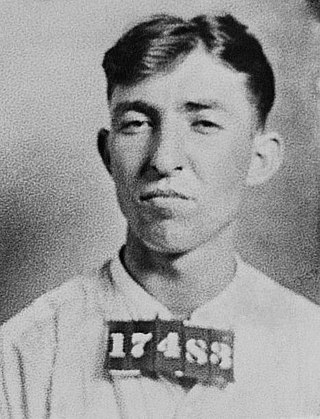
Harold Eugene "Eddie" Green was an American bank robber and Depression-era outlaw during the 1930s, best known as a member of the John Dillinger gang. He was also associated with Frank "Jelly" Nash, Volney Davis and the Barker-Karpis Gang in his early career.
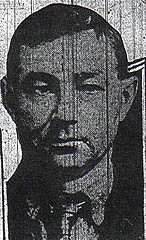
Herman Karl Lamm, known as Baron Lamm, was a German-American bank robber. A former Prussian Army soldier who immigrated to the United States, Lamm believed a heist required all the planning of a military operation. He pioneered the concepts of "casing" a bank and developing escape routes before conducting the robbery. Using a meticulous planning system called "The Lamm Technique", he conducted dozens of successful bank robberies from the end of World War I.

Fred William Bowerman was an American bank robber and Depression-era outlaw.
The Hogan Gang was a St. Louis–based criminal organization that sold illegal liquor during Prohibition in addition to committing labor slugging, voter intimidation, armed robbery, and murder. Although predominantly Irish-American, the Hogan Gang included several Italian and Jewish mobsters amongst their ranks; most notably, Max "Big Maxie" Greenberg. They fought a notoriously violent gang war with Egan's Rats in the early 1920s.

The Crew is a 2015 French action thriller film directed and co-written by Julien Leclercq. The film is about a Parisian heist crew led by Yanis Zeri which specializes in well-planned robberies of armoured trucks. Although Yanis has managed to survive for years as a career criminal by a combination of his sophisticated operations, his low-profile, modest style of living, and his focus on what the team is good at, after his younger brother Amine makes a serious mistake after a recent heist that entangles them with a drug gang, the gang leader forces the crew to do a dangerous heist of a heroin shipment.

















